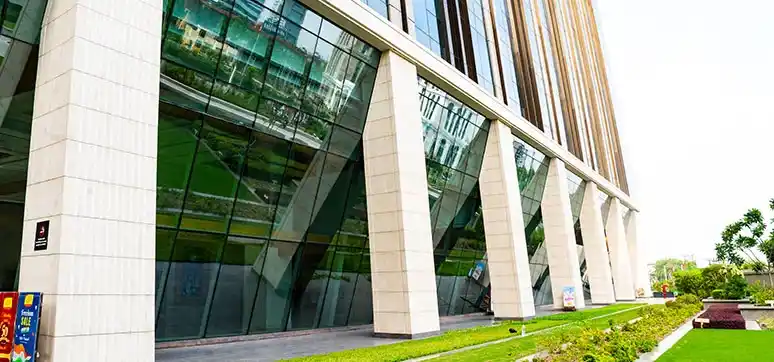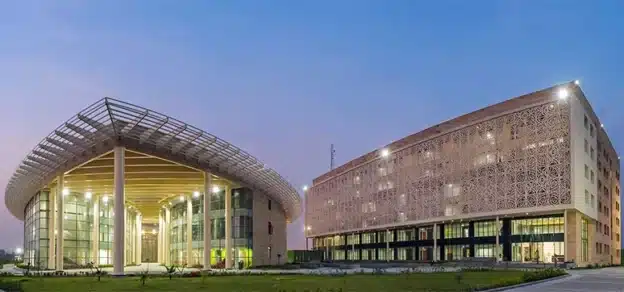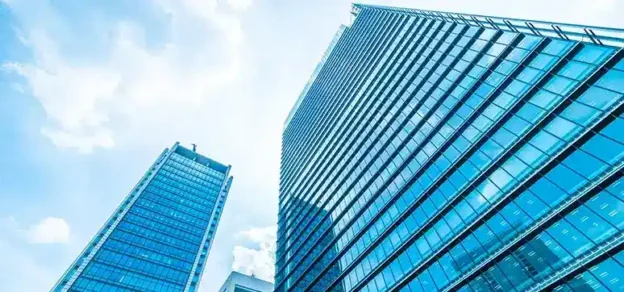Glass & fenestration industry has seen significant growth in the last two decades especially in terms of usage of high-performance glasses due to an increase in awareness. Government initiative towards sustainability has also resulted in increased demand for high-performance glass products. High-performance glasses are those glasses that have the functional ability to reduce heat ingress and at the same time, they allow optimum lighting inside the building, resulting in the reduction of energy usage in a building by reducing cooling and lighting load.
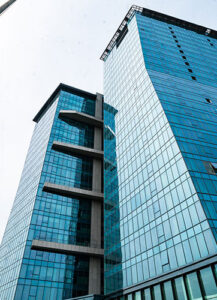
Following are the key driving factors for the glass industry:
• Per capita glass consumption in India is just 1.9 Kg as compared to the global average of 7 Kg per person per year. It indicates that the industry is ripe for growth and it will fuel the growth in Tier II & Tier III cities in the next ten years.
• The Green building movement in India started in 2001 and since then it has picked up pace significantly. The government has also promoted the movement by announcing that India is planning to achieve Netzero status by 2050.
• The use of value-added products is a clear indicator that there is a significant increase in awareness amongst the consumers and key stakeholders.
• Apart from sustainability, the Government initiatives like Make in India, the launch of the Energy Conservation Building Code (ECBC 2017), National Building Code (NBC 2016), all of which promote the usage of the right building materials including glass
• Urbanisation is also an important factor that will increase the usage of glass and boost the growth of the industry. The above factors have helped the industry to grow, but the journey of the glass industry till now was only an upward movement, however, a lot of roadblocks have put the brakes on the growth of the industry as well. However, the industry has grown at the pace of around 7-9% CAGR in the last 15- 20 years till March 2020 when the pandemic put a complete brake on the growth path.
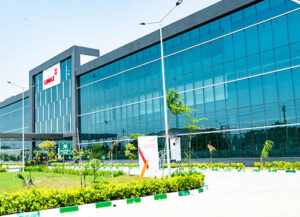
Even overall fenestration industry has seen a radical change during a pandemic. The fenestration industry is experiencing a need for consolidation and more and more organized players are expected to emerge from too many small players. It is good for the industry as it will bring stability, quality, and professionalism to the industry. The Windows market which is estimated at around INR 17,000 Cr is also highly fragmented. However, it is also expected to take a similar path as the fenestration industry is taking. As per industry research report, the global glass industry is expected to grow at around 4.1% over the next 5-6 years, and the Indian fenestration industry including glass is expected to grow at a much faster rate as compared to the global average.
INDUSTRY – A FACELIFT OR A RADICAL CHANGE POST-PANDEMIC
The glass industry has its inherent challenge because glass manufacturing is a continuous process. Once the furnace is lit, it can’t be stopped till the next 12-15 years. This was the biggest challenge during the COVID period where demand almost became standstill but all 11 furnaces in India were producing huge amounts of glass on daily basis. This quantum of glass was impossible to even stock, hence if the produced glass sheets were broken (collected) and the broken cullets were put back along with the other raw materials into the furnace.

CHALLENGES DURING THE PANDEMIC
A lot of external factors also impacted the demand during the COVID period. Real estate contributed nearly 7% to India’s GDP in 2020. As per the projected growth trends during the pre-COVID-19 era, the sector’s contribution was likely to rise to 13% of India’s GDP by 2025 but the current coronavirus lockdown has surely put brakes on its growth momentum.
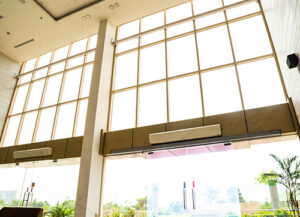
As per revised estimates, it is expected to be at 10% of India’s GDP by 2030. In the commercial sector, net absorption in the top 7 cities was recorded at 40 Mn sqft in 2019, growing by 19% over 2018. Net absorption decreased by 33%, QoQ with 5.53 million square feet space leased during January-March 2021.
In addition to that, labor issues and supply chain challenges also put a brake on the glass industry where laborers returned to their hometown from the construction sites, and even after the situation became conducive for construction, work couldn’t start at the normal pace because of unavailability of manpower.
However, a lot of effort was taken and the threat shown by the pandemic was arrested at a much faster rate to bring the economy back to normalcy. Glass industry showed a ‘swoosh’ recovery because of the factors given below:
New office space completions in the first quarter of 2021 stood at 13.43 million sq. ft., up 5% over the fourth quarter of 2020. According to the CBRE, flexible office space in India stood at 36 million sq. ft. in 2020 and is expected to grow at ~10-15% over the next three years (until 2023).
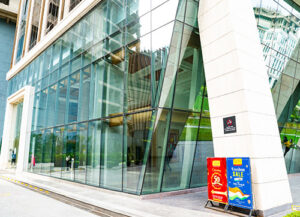
The residential sector has shown a positive growth on account of govt subsidy, increase in online buying and increase in demand for mid-sized residential projects. As per the CBRE report, buying sentiment is expected to remain strong and help support demand for upcoming new launches though underlying risks still remain. Affordable Housing has taken a back seat. Homes in the range of INR 90 lacs to 1.5 cr are preferred. This will push better specifications in the housing segment. Property buying process going online – 60% as compared to 39% earlier.
Government investment towards social infra project (INR 3.65 Lakhs cr by FY 25) & airport (INR 1.43 Lakhs cr by FY 25) has fuelled demand in the glass industry for the next 5-6 years. It will help in bringing the industry back to a rapid growth path.
The global economic scenario also helped the Indian glass industry to recover at a much faster pace. Increase in shipping cost, putting Anti-dumping duty on few countries for glass imports into India and Chinese economic turmoil along with the shutting down of many glass plants in China resulted in a boost to Indian Glass Companies and it helped in the price correction as well which was under pressure since long because of the huge imports.

MARKET DYNAMICS OF ARCHITECTURAL GLASS INDUSTRY IN FY 21
FY 21 can be seen in three phases which are the first three months, the second three months, and the last six months. The first three months were a complete washout as there was no movement because of complete lockdown. This was the phase where the industry lost heavily because of huge inventory and zero demand. The second three months was the phase where a very small residual demand was fulfilled but there were no new projects closed or a new discussion started. This was the phase where losses were still high, but companies were trying to bring the inventory down. Phase three was the second half of FY 21 where demand picked up at a much faster rate as compared to what was expected. But overall industry saw a huge decline in growth which was in the tune of around 30% as compared to FY 20.
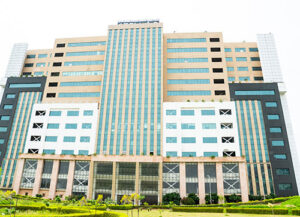
During the lockdown period, companies focussed on the overall consolidation and business process improvement. It helped them to be ready for the upcoming demand and changes in the overall business dynamics. Life was not the same for the glass industry post-pandemic. A lot of radical changes were seen and a few of them were as follows:
1. Digitization of the business process: Customers were more forthcoming in the digital way of engagement and also most of the business discussion happened online.
2. Increase in value-added products’ demand: Green building movement, implementation of govt codes on glass usage has increased the demand of value-added products.
3. Consolidation of the industry: Industry has seen a consolidation where few major players downstream of the industry were able to sail through the impact of the pandemic and many small players are struggling to survive.
4. Resetting the industry norms: The economy is in the recovery phase, office spaces are making a shift in preferences by recalibrating the way office was built and the residential sector is at a revival phase
FUTURE LOOKS BRIGHT
The glass industry has shown great resilience and has come back to the growth path by recovering rapidly from the setback created by Pandemic. Growth in the residential, commercial, and Govt sector, correction in price after a long time, positive Government initiatives, net-zero campaign, industrial consolidation, and technological revolution in the industry is taking it to new heights. However, an increase in the input cost may put pressure on the overall margin and in case it doesn’t convert in recover the cost in the form of price correction.

TO SUMMARISE
The pandemic forced us to find new ways to work and collaborate to be productive and efficient and we have to make sure we don’t lose sight of these. The market has begun to re-emerge and demand has started growing again and recovery has been good. The construction business continues to expand as the government sets ambitious targets for physical infrastructure investments to boost economic growth. Between 2019- 2024, it is targeting a spend of US$455 billion in infrastructure development, and the Construction industry is expected to record a CAGR of 15.7% to reach $ 738.5 billion by 2022. The construction and building industry accounts for 60% of the total glass consumption by value, hence the outlook for companies like AIS is bright.
